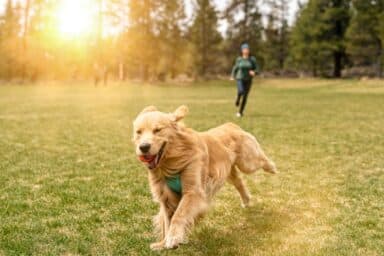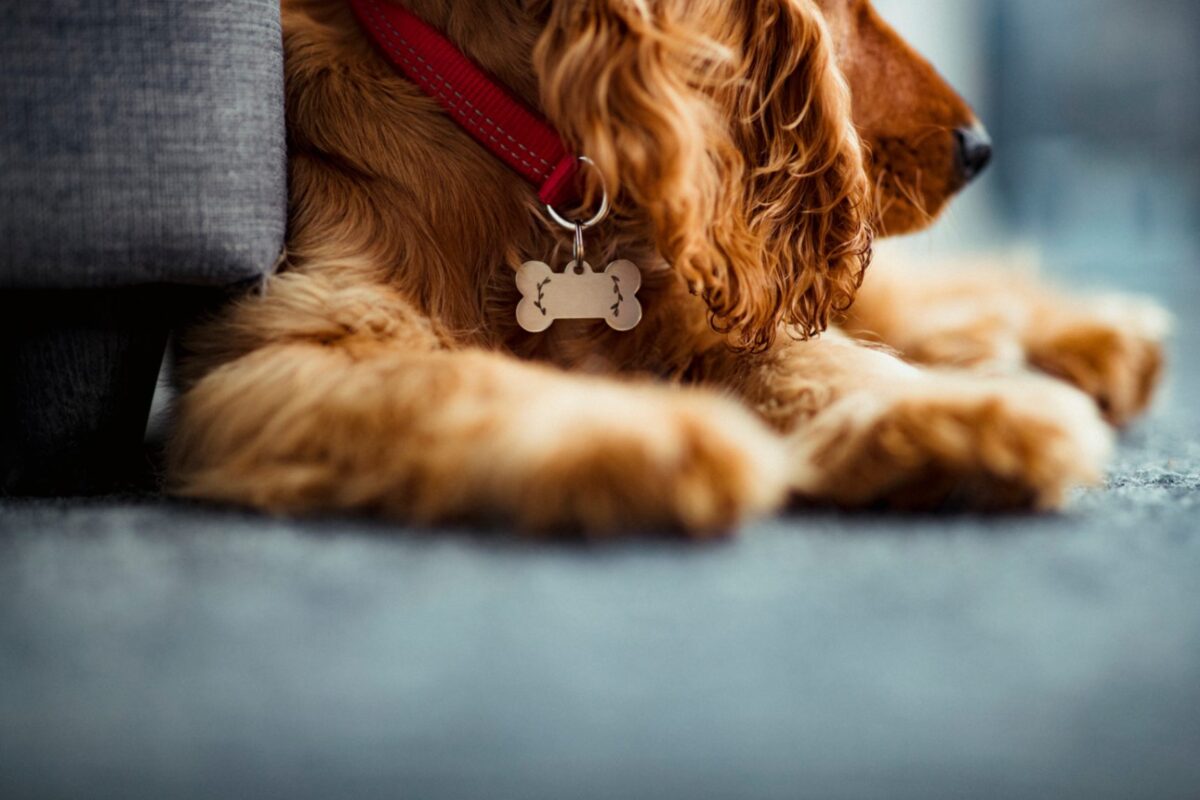Dog Walking: The Health Benefits of Walks with Your Dog
Here’s how walking with your pooch can benefit you as well

Find creative ways to handle stress with a companion who will always be there for you. Your dog.

As many dog owners already know, taking the time to bond with your furry friend can turn your dog into a close companion for life. That is especially true when circumstances make it harder to maintain close ties with family and friends. Relocating to a new area, retiring from work, or otherwise feeling lonely or isolated can make your relationship with your dog even more important.
Dogs have a unique ability to provide their owners with an endless amount of love and emotional support, especially during times of great stress. They provide an outlet for fun and play, while bringing lots of laughter and levity into the home to keep you in the present moment rather than obsessing on an uncertain future. In fact, studies have shown that dogs provide comfort that is at least equal to that of a close friend.
[Read: The Health and Mood-Boosting Benefits of Pets]
A recent study conducted at the University of Utah found:
Your dog can also help to:
Being creative and finding new activities to do with your dog are essential for a happy and emotionally content home companion. Some activities could include:
Taking long walks and hikes. Going on a long walk with your dog is a great way to not only explore new areas, but also to get much needed exercise for yourself—and it makes a welcome break from the boring repetition of the gym.
Making homemade dog treats. This allows you to not only to spend quality time with your dog, but also cultivate your culinary skills, something which can help to improve your own diet.
Training. Spending more time at home means you have more time to train and improve your dog’s behavior. This not only provides mental stimulation for your dog, but the benefits of this will last for the rest of your dog’s life.
Practicing doggie yoga. Finding Zen has never been more important than in these difficult times. Incorporating yoga and meditation into daily playtime with your dog can help you de-stress and spend more quality time with your furry companion.
Trying a “stairway dash”. If you feel that walks or games of “fetch” are getting boring, this is a sure way to not only tucker out your dog but also leave you feeling fully exercised as well. Challenging your dog to a race up a flight of stairs is a fun way to physically engage your dog at home.
Building an obstacle course. Setting up an obstacle course is a great way to get creative with your dog. Dig out the hula hoops, jump ropes, and basketballs that are buried in your garage and lay out a course for your dog to navigate. Be sure to reward your dog with lots of encouragement and treats afterwards.
Playing tug-of-war. Most dogs are thrilled at the prospect of a great game of tug-of-war. Depending on how big or how small your dog is, take an old hand towel, washcloth, or bath towel and use it as a substitute for a braided rope toy.
Just relaxing. You might be guilty of over-indulging in this particular activity, but nevertheless, after a long day of new tricks and new adventures, snuggling up together on the couch while watching a movie is the perfect way to cap off a busy day.
Having a dog by your side is a huge, natural mood enhancer—for both of you. Bringing your dog along on outings can also be a wonderful way to strengthen the bond between you and create lasting memories.
By researching the regulations of your destination, equipping yourself with the right gear, prioritizing your dog’s safety, and providing positive experiences, you can ensure that each adventure is a delightful and enriching experience for you and your beloved furry friend.
Here are six tips to make the experience enjoyable and trouble-free:
For dog owners in the United States, for example, the opportunity to bring your furry friend along isn’t always consistent. Different states have varying regulations about where dogs are welcome, and communities sometimes also set their own rules, like keeping your dog on a leash at all times.
Some states allow dogs in outdoor seating areas of restaurants, while others prohibit dogs from any establishment where food is served. Even some state parks either don’t allow dogs at all, or only allow them on a leash in certain areas, such as campsites.
In the end, even though we’d love to simply bring our dogs everywhere, getting out and about with your furry friend may involve some research beforehand. Make sure to check the local regulations and look into what pet-friendly establishments there are around you.
Many pet owners hesitate to take their dogs to places like the beach or a lake due to concerns about the mess pets inevitably bring back to the car. Well, your car doesn’t have to be a horror show after every outing if you come prepared.
A good car seat cover will keep your seats free from hair, mud, and water. There are many other great products available to make your life easier, like a spare wheel bag that enables you to store sandy leashes, harnesses, and dog toys outside of your car. If your pooch goes swimming, you can dry them off with a towel and then store the smelly towel outside of your car until you get home.
Ensuring your dog’s safety during car rides is paramount. Whether you’re going on a short drive or a longer road trip, it’s crucial to keep your furry friend secure.
Use a dog crate or a restraint system designed for car travel to prevent accidents and keep your dog safe in case of sudden stops or collisions. This precaution not only protects your dog but also minimizes distractions for you as you drive.
Protect your dog’s well-being by refraining from leaving them unattended in a parked vehicle for extended periods. Even in moderate weather, the temperature inside a stationary car can escalate rapidly, posing a risk of heat stroke and other health issues to your dog.
If you must leave your dog in the car for a few minutes, make sure it’s safe for them: leave windows open, try to park in a shaded area, and be back as soon as you can.
Introducing your dog to new environments can be an enriching experience for both of you. However, not all dogs immediately feel comfortable in unfamiliar settings.
Gradually acclimate your dog to new places by starting with less crowded and quieter locations. Use positive reinforcement techniques to associate these places with positive experiences. Over time, your dog will learn to love exploring new places with you.
Bringing treats on your outings can be a powerful tool for training and reinforcing positive behavior. Engage in outdoor training sessions to help your dog practice commands and good manners in real-life situations. Use treats as rewards for following commands, behaving well around other dogs and people, and staying close to you. This not only enhances your dog’s obedience skills but also makes the outing more enjoyable for both of you.
Teaching your dog new tricks is a powerful and fun way to form a closer bond. These new tricks can also improve overall obedience and manners, while increasing your dog’s flexibility, balance, and concentration. Some easy ones to start could include:
Once you and your dog are comfortable with these, you can move on to more difficult tricks like standing on their hind legs, teaching your dog to wave, or even having your dog jump up onto your back! For links to more dog tricks, see the “Get more help” section below.
Remember that with any relationship you get in what you put out. Dogs are no different in that respect; so be sure to respect and observe your dog’s needs. In turn, they will be more willing to make you their best friend. Ways in which to do this include:
BetterHelp is an online therapy service that matches you to licensed, accredited therapists who can help with depression, anxiety, relationships, and more. Take the assessment and get matched with a therapist in as little as 48 hours.
Take Assessment HelpGuide is user supported. We earn a commission if you sign up for BetterHelp’s services after clicking through from this site. Learn moreHave a preparedness plan in the event that you become sick, require hospitalization, or are otherwise unable to take care of your dog.
Millions of readers rely on HelpGuide.org for free, evidence-based resources to understand and navigate mental health challenges. Please donate today to help us save, support, and change lives.
Donate to HelpGuide.org today